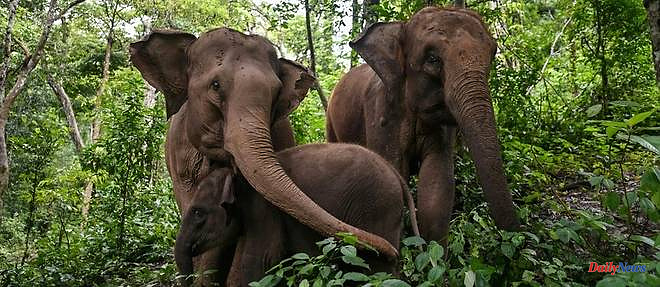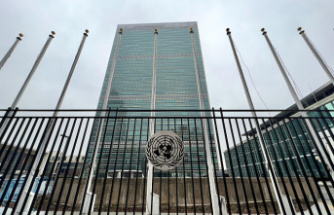Two-thirds of the habitat of the Asian elephant have been destroyed in three centuries, according to a vast historical study published Thursday, likely to provide avenues for restoring sustainable land use and curbing human-wildlife conflicts.
In Southeast Asia -India and China included-, the various ecosystems adapted to the life of pachyderms, in particular grasslands and tropical forests, "have decreased by almost 2/3 since the beginning of the 18th century, i.e. a loss of more than 3 million km²", summarizes for AFP Shermin de Silva, of the University of California at San Diego, who led the international research team.
"This period corresponds to changes in land use dating back to colonial times as well as the more recent advent of intensive agriculture", continues Ms. de Silva, a Sri Lankan biologist who is also the founder of the NGO Trunks and Leaves, specialized in the protection of the Asian elephant, threatened with extinction.
According to the findings of the study, published in the journal Scientific Reports, logging and agriculture have also reduced the average size of elephant habitat patches by more than 80%, from 99,000 to 16,000 square kilometers. .
“The remaining islets are very fragmented and more than half of them potentially of poor quality, which can lead to negative interactions between wildlife and humans, especially in agricultural areas,” adds Ms. de Silva.
Asian elephants, 100% herbivores and able to consume up to 150 kg of plants per day, can cause significant damage to crops and plantations.
By analyzing data on land use between the year 850 and 2015, the team managed, through computer modeling, to reconstruct the evolution over 13 centuries and on a continental scale.
In detail, the study estimates that 84% of habitats have been lost in India and 94% in China. Bangladesh, Thailand, Vietnam and Sumatra also saw more than half of these areas destroyed, while only Malaysia saw an increase in range over the period, particularly in Borneo (61%).
"The past is the key to the future", justifies the biologist: "if we want to protect and restore habitats, we must ask ourselves honestly about the scale of the actions necessary and for this have a more precise understanding of the past".
The method could be adapted for other species and in other regions, in order to assess land use practices and the restoration programs envisaged.
The international community, by adopting the Kunming-Montreal agreement in December at the COP15 biodiversity, committed to placing 30% of the planet's land under protection by 2030.
"The usual approach, which consists of increasing the proportion of so-called protected land, is not the solution", warns the researcher, "because elephants need to move over large areas", therefore over territories interconnected.
"Such protection programs can also threaten human livelihoods and cultures," she said, referring to the rights of indigenous peoples. These regularly come into tension with certain logics of scientific conservation, sometimes qualified by activists as "green colonialism".
“Instead, we need to find ways to allow people and elephants to share working landscapes, as well as restore traditional land management systems where possible,” she argues.
These strategies could also benefit tigers, rhinos and orangutans, as well as wild cattle or deer, notes the biologist.
The Asian elephant, with some 50,000 individuals, two-thirds of them in India, is considered "in danger" of extinction on the IUCN red list, as is the African savannah elephant. The third species, the African forest elephant, is "critically endangered".
04/27/2023 18:30:30 - Paris (AFP) - © 2023 AFP












